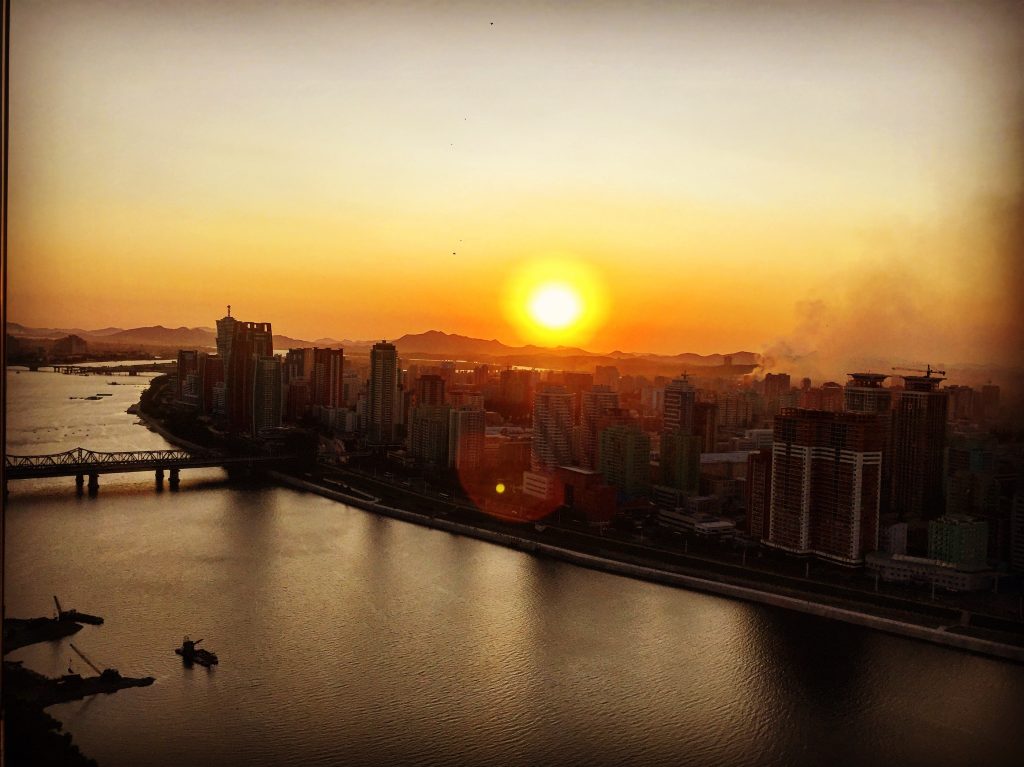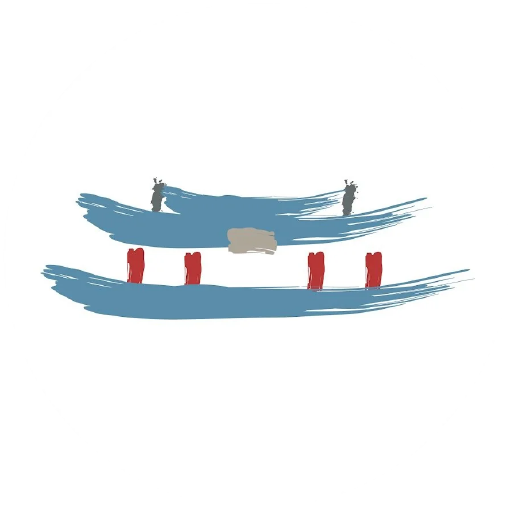Since 2020, I’ve been making short educational videos for the YouTube channel DPRK Explained.
The project initially began as an outlet for a few ideas I’d had for marketing projects whilst working in DPRK tourism at Koryo Tours; specifically, I’d wanted to push the train travel aspect of a trip to Korea with a video about the railway network; rather niche I know, but the kind of thing that might interest enough people to bump up numbers on some particular tours.

The success of that first video, as basic as it seems now in retrospect, was the catalyst which encouraged me to make more videos.
In hindsight, success back then meant a few hundred views, whereas today I’m privileged enough to count views in the tens of thousands, and on rare occasions, hundreds of thousands.
Subsequent videos on Air Koryo and the Pyongyang Metro network demonstrated to me that there was an audience out there with an interest in the DPRK outside of the typical headlines and clickbait travel vlogs. These videos and articles often portray one side and one perspective on the country incessantly, but completely leave out the side which I believe to be the most fascinating – the everyday.
What is ‘The Everyday’?
Going back to 2018, just after my 18th birthday, I was living in Seoul.
I took a trip to the Odusan Observatory near Paju, on the inter-Korean DMZ; a place I would end up visiting almost every other weekend.
On my first trip, I peered through the binoculars into, what was advertised to visitors as, almost an entirely different universe. At first glance, it did seem to be a world away from everything I’d ever known, however, on this particular day, in this particular village which stands opposite the observatory, there was a school sports day.
Standing there for a while, I observed the children filing out of the local primary school in their sports kit, spotting the odd student who didn’t seem that interested (something I could very much relate to) and watching the kids compete with the teachers standing around them.
As I continued to look around, I spotted two men mending a motorcycle on the side of a road, a pair of teenagers being told to carry bags of something down to the fields, and local people going about their daily lives; this was the moment it struck me that, despite the vast difference between our lives, people are people, wherever one goes in the world.
I’m sure this is a realisation everybody who works in the field comes to at some point or other – but as a teenager who had held a fascination with the country since before I can remember, this was the moment I suddenly became enthralled with how this country operated.
As with all countries, everyday life in the DPRK is made up of so many moving parts that for any other country would seem mundane, but with this particular society, people seem to know so little about normal people’s lives that the ordinary becomes fascinating.
How does public transport work? What is the Pyongyang metro like? Television? Radio? The national airline? The railway network? Movies? National Holidays? These topics, and many more besides, make up the everyday lives of over 25 million people – but more often than not, this entire society is boiled down to its politics and effect on geopolitics.
It’s this one-dimensional understanding of the DPRK that, in my opinion, has led to misinformation, and misunderstanding amongst so many people. Approaching the country from the perspective of a functioning society, as well as a geopolitical player, is fundamental to understanding the DPRK; its point of view, its rationale, and so much more.
It’s for this reason that I decided, back in 2021, to put more effort into producing educational videos on small, bite-sized topics; trying to educate people one step at a time on non-political, non-controversial subjects relating to the country.
Cultural Engagement
In my, admittedly limited experience working in DPRK tourism prior to the Covid-19 pandemic, I had the chance to see, in person, how visiting the country provided tourists with a deeper perspective on the DPRK. I don’t believe I ever worked with a group that came out after the tour without having their opinions altered, even if just a small amount.
Most, if not all, were well aware they would not be able to see everything, and that’s true.
However, to write off the value of travelling to the DPRK for this reason is, in my view, a narrow-minded way to look at the experience. Visiting the country, interacting with the people, and seeing how people live creates the space for a much broader, and deeper understanding than one could possibly have without visiting.
To help outline this point, I’m reminded of one of my most poignant experiences in the country; we were on our way south from Pyongyang along the Pyongyang-Kaesong Motorway when we stopped in the city of Sariwon, the capital of North Hwanghae Province.
Leaving the tour group to learn about the cultural history of the region, I hiked up the hill behind the ‘folklore village’ we were visiting, with a couple of tourists from the group, in order to get a nice view over the city (and bag some good photos for marketing!).
Once we reached the top, we were met by a small group of young soldiers of the Korean People’s Army.
I don’t smoke, but one of my group did – he nudged me to ask for a lighter from the soldiers, and so, using my then-very limited language, I asked for a light, and one of the young guys obliged.
Once we moved back to sit down, we noticed they’d started taking photos of us on an old digital camera. I remarked “왜 사진을 찍고 있습니까? 우리는 예프지 않습니다!” which sparked a laugh from the lads, and paved the way for a conversation in which we talked about their upbringing in Sariwon, and my upbringing in the UK (we were all roughly the same age, around 19-20) and the differences between our countries and cultures.
After a quick session of taking group photos, we said our goodbyes and headed down the hill to meet up with the rest of the group.
I hold this experience in such high regard as it was one of the first opportunities I was presented with to truly humanise the country. In the months and years which followed I would end up meeting and knowing many more Koreans, but this event, with some young boys only a few months different to me in age, gave me the chance to view the DPRK not as a monolithic ideological force, but instead as a country, filled with people, with a society which differed greatly from my own.
From that day, I decided I wanted to pursue engagement and cooperation and work to help engage and educate younger people so that we could one day have a generation better equipped to work with their counterparts in the DPRK to build a brighter future.
It wasn’t long after this that I began working, through Koryo Group, with the Pyongyang International Film Festival, as well as an early version of, what we called at the time NKArchive – collecting bits and bobs that the company had acquired over more than two decades and putting them online with a bit of context to help people understand their meaning and importance.
This was, perhaps, my first effort to try and get people interested in the reality of the DPRK; the everyday.
It was less than a year after those projects that I would go on to start work on what would eventually become DPRK Explained.
Conclusion
It’s my opinion that as long as we keep seeing each other as adversaries, we’ll never get anything done; and as long as we refuse to engage and educate ourselves on other cultures, we’ll never have the tools to stop seeing each other as adversaries.
One of the most common comments I’ll get on YouTube videos about the DPRK, aside from the ones calling me ‘propaganda’, will be something along the lines of:
“Oh. It’s just like [insert relatable moment here]’.
People travel by metro, bus, tram, and taxi all over the world – it’s the same in the DPRK.
People watch TV and listen to the radio all over the world – it’s the same in the DPRK.
People take breaks for national holidays to visit family and friends, and maybe enjoy a BBQ or a drink in the park – it’s the same in the DPRK.
Of course, these similarities come with a huge serving of differences, but by creating that initial link between the viewer and the subject matter, we create a space for intrigue and interest, which often encourages research which, in turn, will foster a deeper understanding of the local culture, history, and society.
It’s this pathway which is the impetus behind the channel itself. Rather than trying to create an encyclopaedia for all things DPRK, the aim is to spark an interest and engage a new audience who may never have had the chance to read beyond the clickbait YouTube videos and politically-focused news headlines.
Hopefully, through this project, we can help inspire a handful of young people who can go on to become the next generation of academics, policy-makers, diplomats, and NGO workers; that’s how, in the long run, we can foster real change in how the world engages with Pyongyang and its people.
